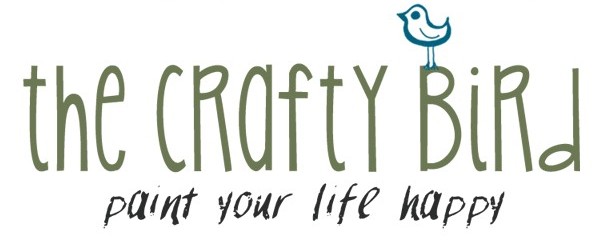Real milk paint comes in powder form, is made from casein, lime, earth pigments, clays and other fillers such as chalk. When mixed with water it will last up to 5 days covered in your fridge. In powder form, it will last forever and ever!
Milk paint gives a tough, flat finish that stains easily if it is not sealed but will last for a hundred years once it is sealed. A layer of The Crafty Bird’s Carnauba Milk Wax or Water Based Lacquer gives durability when applied over milk paint, whilst providing a beautiful unusual finish.
What I love about this paint is that it has it’s own personality. It is lovely to work with and it stubbornly dries to how it wants to look and not necessarily how you want it to look. The wood you are painting will often dictate how the paint dries. But for the most part, it dries without brush strokes, and ages itself naturally without too much effort in distressing techniques.
How to mix it up
Mixing up milk paint for the first time can be scary and nerve-wracking. As a milk paint manufacturer and seasoned painter, even I was nervous mixing it up in the early days! But put aside those nerves, grab a bag and let’s get cracking – you will be so glad you took the plunge! Here is the easy peezy guide to mixing up The Crafty Bird’s Milk Paint:
Step 1: grab a container which you plan to only use for mixing paint e.g. an old jam jar with lid, plastic bowl or cup.
Step 2: Measure out how much milk paint powder you will probably need.
I always recommend beginning with a small amount of powder and adding a dribble of water first. If you need to add water later to the mixture that’s ok. It’s better to have the mixture too thick than too watery. The rule of thumb is to mix equal parts powder to tepid water if you are looking for block coverage. If you are looking for more of a wash finish, then you can add a little more water to the mixture. Milk paint is the only paint that, when watered down, the paint quality isn’t compromised.
Step 3: Mix the tepid water into the powder and stir with a stirrer or a plastic spoon. If you are using the frother, make sure you stop whisking before a froth appears on the mixture. If you do get a froth, let the paint sit for a few minutes until the froth disappears. Another option (and a favourite with some of the experts) is to bung it all into a clean, empty jam jar and shake vigorously until the powder is dispersed (do make sure the lid is on though!) But I like to stir it, it is relaxing.
Please Note! It is very very normal for lumps to appear initially in the mixture – but, BE NOT AFRAID! I can promise you, hand on my heart, they will disperse. The lumps are from the casein content but the lime in the powder fixes everything by breaking down the casein. Y’see? There is a science to everything!
Step 4: If you feel that the mixture is too thick, you may want to add a little more tepid water to it. “Little” being the key word here – remember, we are taking baby steps here!
Step 5: After approximately 3-5 minutes of mixing, your paint mixture should be similar to single cream consistency (and it should be lump-free).
If you still have lumps in your paint, don’t panic – you can let it stand for a couple of minutes – this will completely get rid of any remaining lumps.
Step 6: Paint! When you are applying your first coat, the paint may seem darker than you imagined (or it looks on the colour chart) – don’t worry, Milk Paint always dries lighter than when it is wet.
Final tips:
Depending on the finish you are seeking, you may want to give your piece a 2nd coat. If you have a lovely wood grain on your furniture, you might just want a wash to allow the grain come through.
